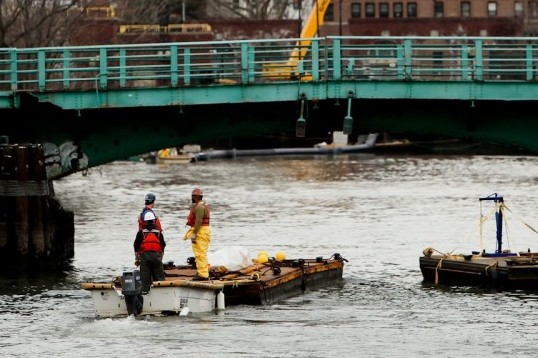NEW YORK—When heavy rains hit, the torrent enters the sewage system through grates on the street, mixes with raw sewage, and carries the sewage into local waterways when it overflows. With the NYC Green Infrastructure Plan, released in September 2010, the city made a commitment to soaking up stormwater before it gets to the sewer.
For example, soil and plant life trap water along the waterways in a green infrastructure project near Jamaica Bay, Queens. The planned Sponge Park along the Gowanus Canal in Brooklyn is another example.
This working infrastructure will soak up storm water with man-made wetlands, and a system that captures and filters water before it gets into the canal in a pilot project set for the spring of 2012.
Smart technology could team up with green infrastructure in the city’s future stormwater management system.
Geosyntec, an environmental engineering consultant for government agencies across the nation, including New York State Department of Environmental Conservation, has developed a system that reacts to wet weather.
A virtual central nervous system processes data from outdoor sensors, satellite information, weather reports, and other relevant data from the Internet. It then reacts automatically, emptying basins to make room for the downpour, according to Fast Company, a business and technology publication.
“The intent of an active system is to take the built environment and have it perform as if it were natural,” Marcus Quigley, principal water engineer for Geosyntec told Fast Company.
Geosyntec also uses remote sensing and geographic information systems to predict the effect of man-made changes to coastal ecosystems. For example, if an undersized culvert were removed, the system can predict how vegetation in the coastal salt marsh would react.
Geosyntec’s smart infrastructure is already in place in St. Louis, Mo., and New Bern, N.C. It plans to expand to Washington, D.C., and New York City.







